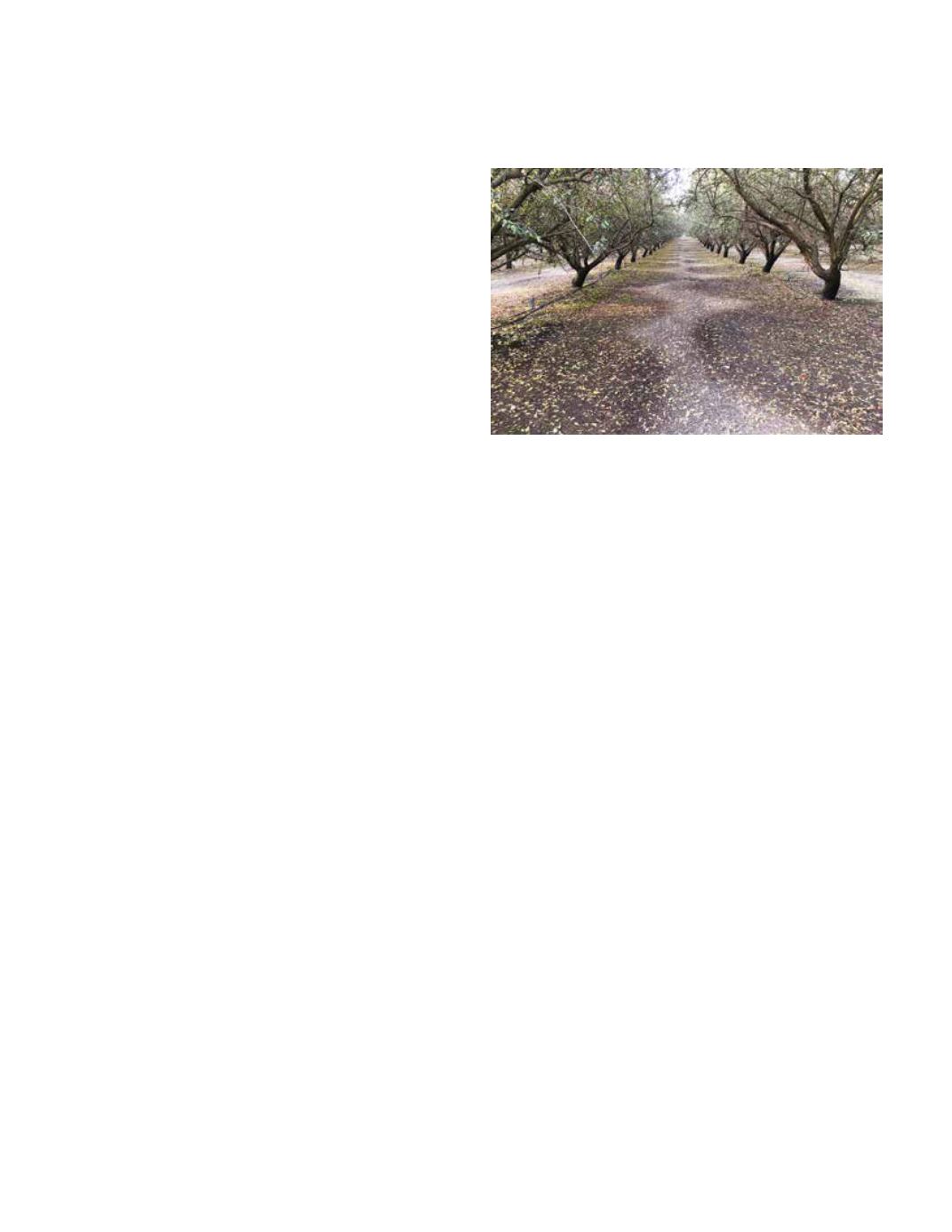
These problems are not easy to resolve, but reducing and
preventing is critical to maintain high yields. Areas with
problems should be sampled to identify the underlying soil
chemistry issue. The irrigation water should also be sampled.
5. Appearance of salt toxicity.
Are leaves exhibiting signs
of brown, crispy, or “burnt” edges
?
This could be evidence
of sodium or chloride toxicity. Review leaf tissue samples
from July to determine the element of concern. Sample
soils to compare to previous year’s samples to identify any
emerging salinity issues. Utilize this information to develop a
leaching program, which may include early winter irrigations
to refill the profile and leach and applications of soil
amendments to assist with the leaching process.
6. Under-performing areas.
Trees that are growing at a
slower rate than other areas could be indicative of a soil
texture change or poor irrigation distribution. It is difficult
to manage soil texture differences, but emitters could be
changed to apply water over a larger wetting pattern to
increase the soil volume. In these cases, try not to change
the emitter flow as this may impact distribution uniformity
(DU). Pump and irrigation line maintenance will help improve
DU. Check pressure at the emitter to determine if flows
are reduced. If lower pressures are observed, check the
flow rate of the pump to see if it may have dropped or not
properly set, inspect lines for leaks and clogged screens
and emitters for precipitation build-up and flush the lines.
Late Postharvest Nitrogen Applications
Mid-July leaf nitrogen content should be reviewed to
determine nitrogen needs. Nitrogen applications to
trees with adequate or excessive mid-July leaf nitrogen
levels (>2.5 percent) are most likely not needed. This is
supported by research conducted by Franz Niederholzer
(UCCE Yuba/Sutter/Colusa) who has shown that mid-
September or later postharvest nitrogen applications to
trees with mid-July leaf nitrogen at or over 2.5 percent
did not improve crop yields the following year. Trees
were followed for four years within this study.
Furthermore, late postharvest applications of nitrogen may
not even provide a benefit. Nitrogen moves into the tree
with water via mass flow. By the end of September, 70
percent of the water usage in the postharvest period has
occurred, reducing the ability for nitrogen to be “pulled”
into the tree. Applications of nitrogen to trees after this time
should be significantly reduced (<10 lbs./acre) or eliminated
to prevent leaching of excess nitrogen.
Timing of Orchard Pruning
Over the past few years, there has been an increase
in wood canker pathogens infecting pruning wounds,
wind cracks and damaged areas of young almond trees.
Infections start off slow, but eventually girdle limbs, killing
scaffolds and impacting production. These pathogens are
most active right before, during and immediately after rain
events as they require the humidity to sporulate and the
wind-splashing of rain to spread. In order to prevent pruning
wound infections, pruning of young trees should not occur
when rain is in the forecast. Cutting of limbs on primary
scaffolds of mature trees should also not occur at this time.
Planning to prune young trees around the weather may
delay pruning. Research performed in Yolo County
has shown no impact when pruning as late as full leaf
expansion (late March). In this study, the growth was
followed over three years and no differences were
observed in the various treatments, including a winter
dormant pruned control. Research on how early pruning
Including nitrogen in postharvest irrigations may not be
necessary. Mid-July leaf nitrogen concentrations should be
evaluated to determine need.
3 3
S E P T E M B E R – O C T O B E R 2 0 1 7


